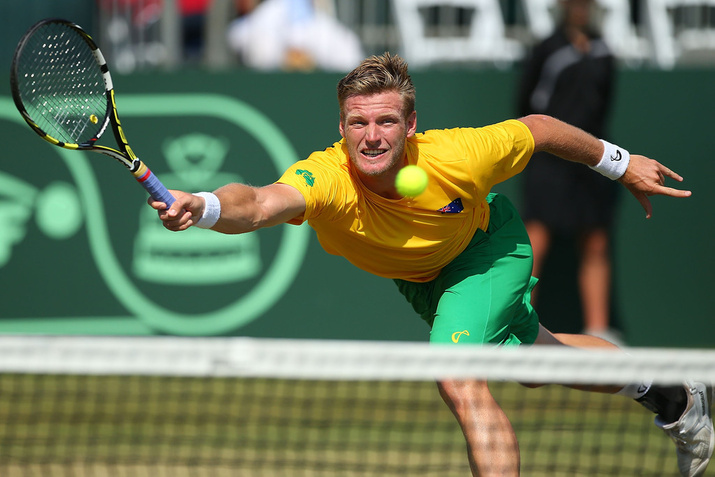Don't miss any stories → Follow Tennis View
FollowSam Groth Aims to Join Ranks of Seismic ATP Servers
A tennis match can be subdivided into smaller parts and different aspects of the game can be more important in different matchups. Rafael Nadal's crosscourt forehand, for instance, has really made his career against Roger Federer. For some players the backhand is more important and for others, the net game.
It is undeniable, though, in today's men's game, that the serve is the most influential shot in all of tennis. We have seen several players push their way into the top 20 or 30 just on the power of an unreturnable serve alone.
Now, within the huge servers, there are different levels. Milos Raonic finished the year in the top 10 because he has a pretty solid ground game to complement his monster serve. Most other players who routinely serve as big (e. g. John Isner and Ivo Karlovic) have a lot of trouble winning points once rallies become extended. Raonic has improved his baseline game, though, and is now a formidable opponent for everyone.
Raonic, Isner, and Karlovic are known for being the tiebreak kings. They have trouble breaking opponents (though Raonic is quickly overcoming that) but almost never get broken themselves. They have built their careers by winning tiebreaks and capitalizing on opponents mistakes on their own serves. They, and to a lesser extent Kevin Anderson, are the players we usually think of as those who win matches on serves alone.

Well, they are going to have to let another player join this crew. Sam Groth of Australia rapidly made his way up the rankings last year. He is 27 but possesses one of the biggest serves in the world and is finally getting enough consistency with it and the follow-up game to challenge better players. His ranking fumbled outside the top 200 for far too long, but he has finally moved up into the top 100.
Groth is credited with having the fastest serve ever recorded, though there were reasons to believe that the radar gun at that Challenger tournament in Busan, South Korea (2012) was being a little nice with the speeds, to say the least. That being said, his serve is still humongous and is tough for anyone to return. His placement has also been improving this year which is a big part of his game.
In 2014, Groth reached four doubles finals and won his first-ever Challenger singles title in Rimouski, Canada. He also reached his first World Tour quarterfinal (in Brisbane) and semifinal (in Newport). He still has a long way to go and loses concentration a bit too much–he does not reach nearly as many tiebreakers against better players as he needs to to be competitive. But he is getting there and, if last year was any indication, there is no reason he cannot be as successful as Isner and Karlovic are now.










